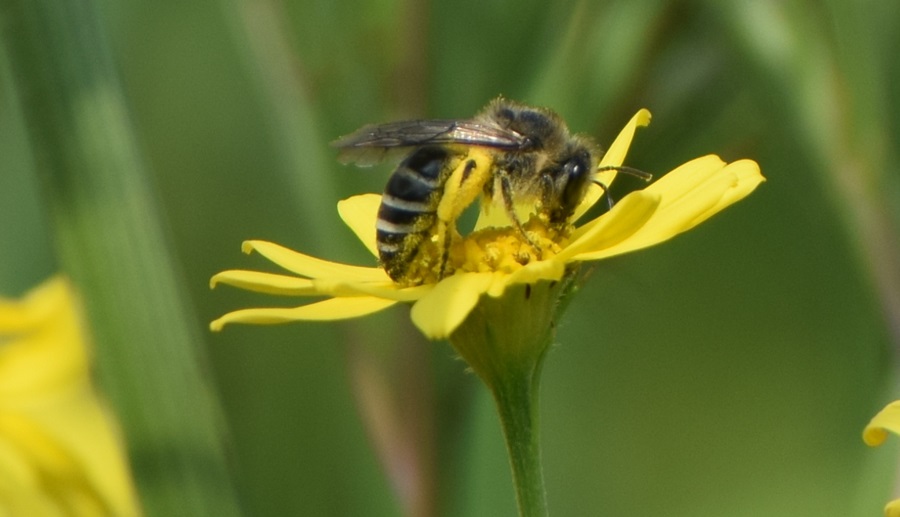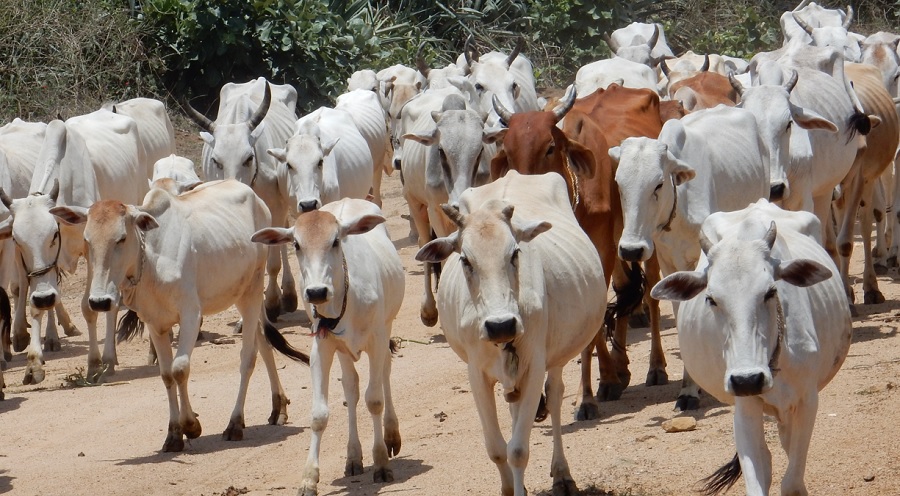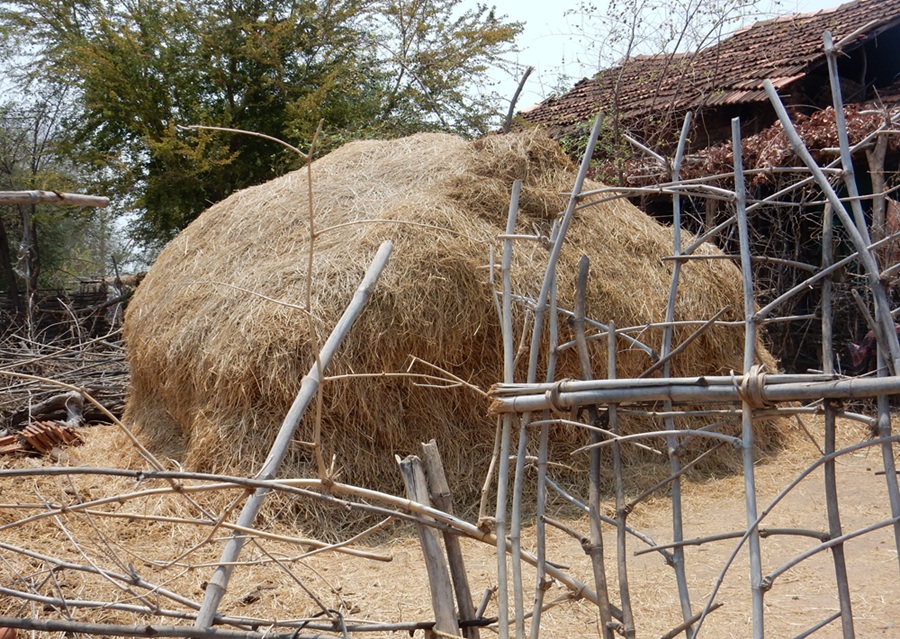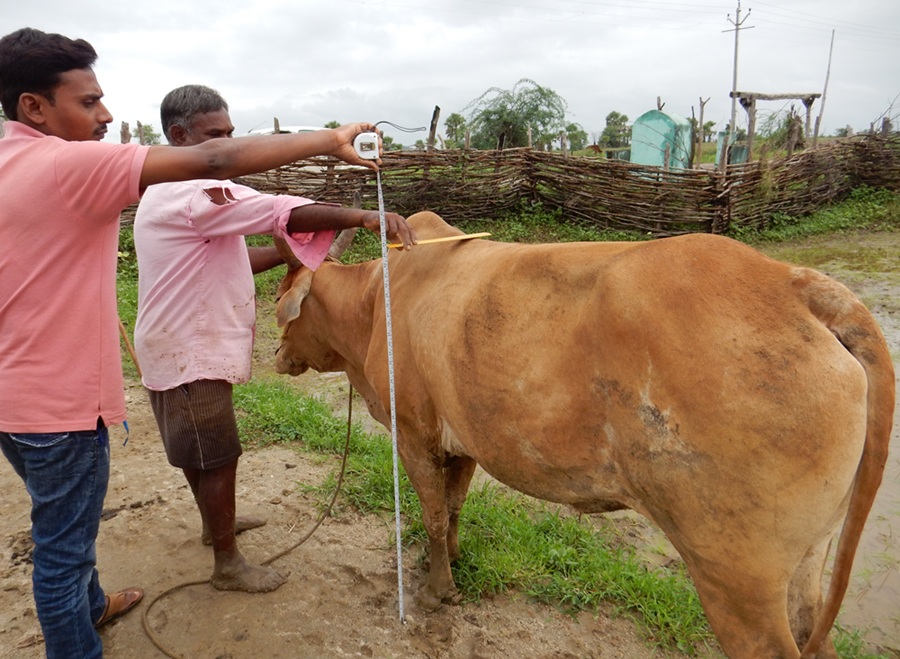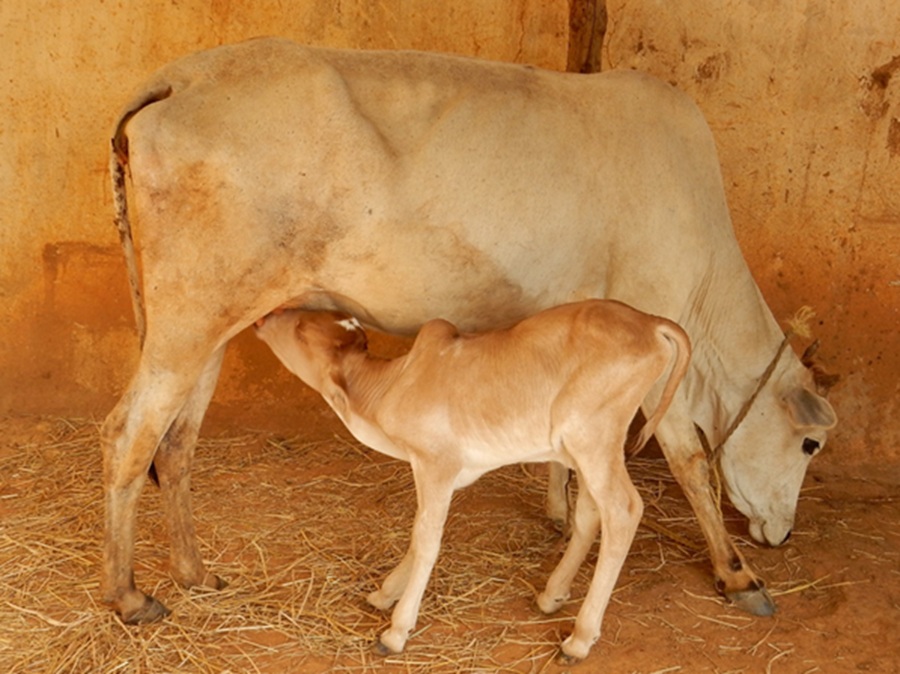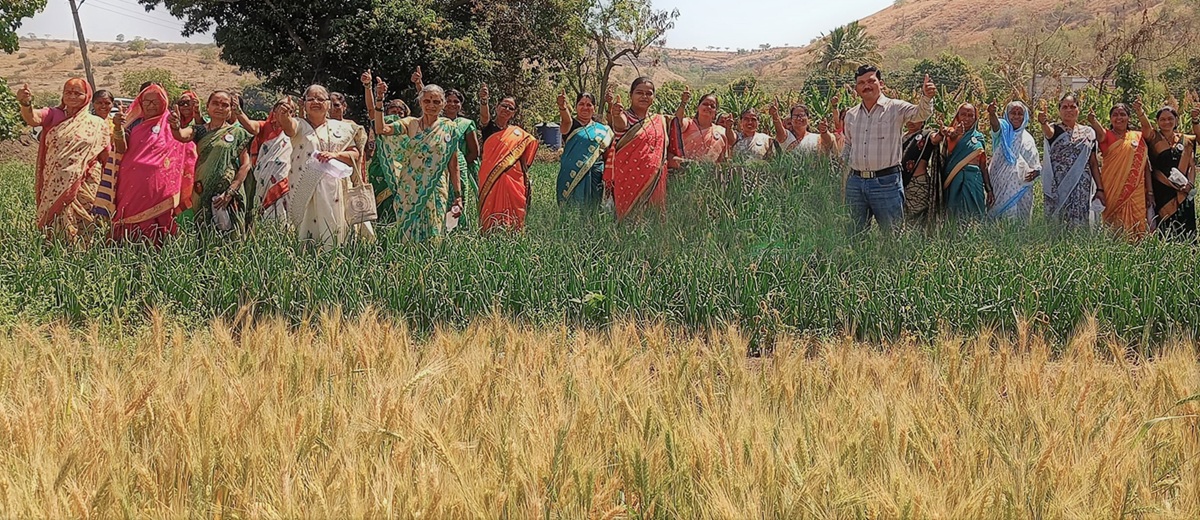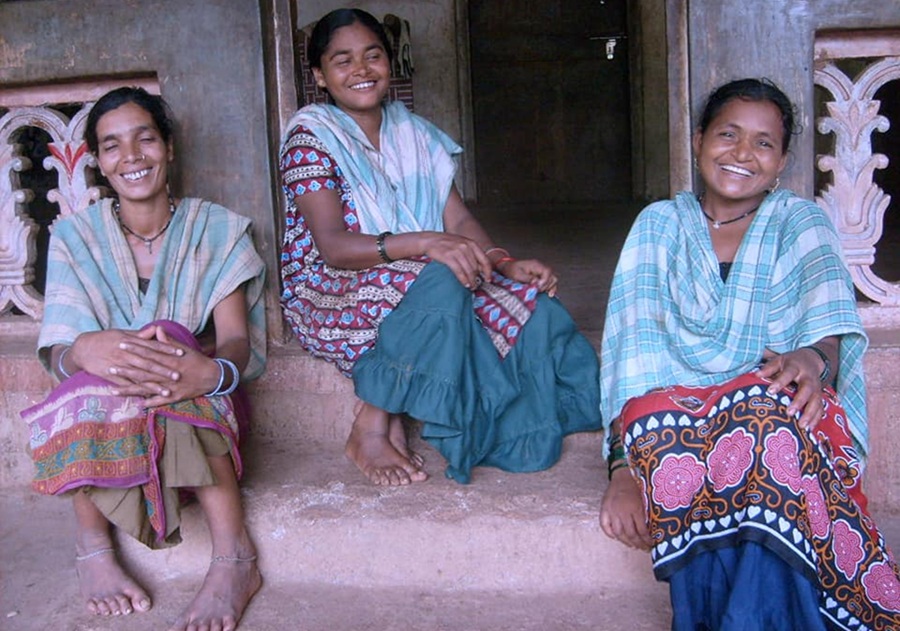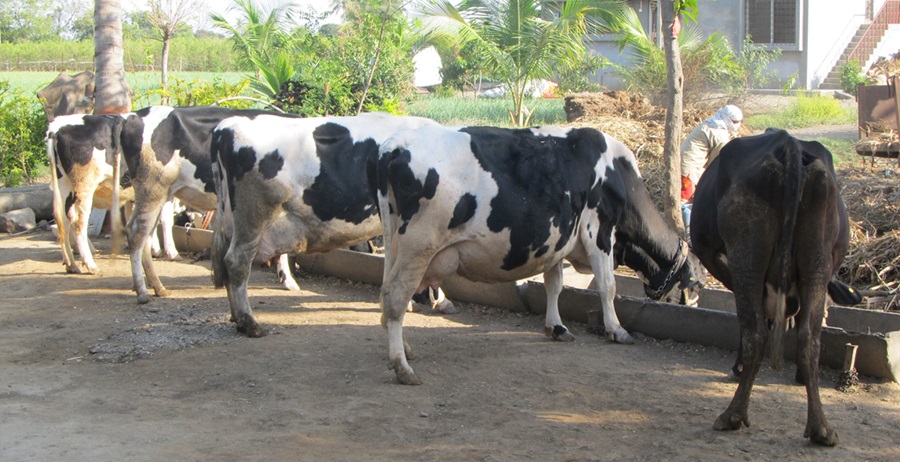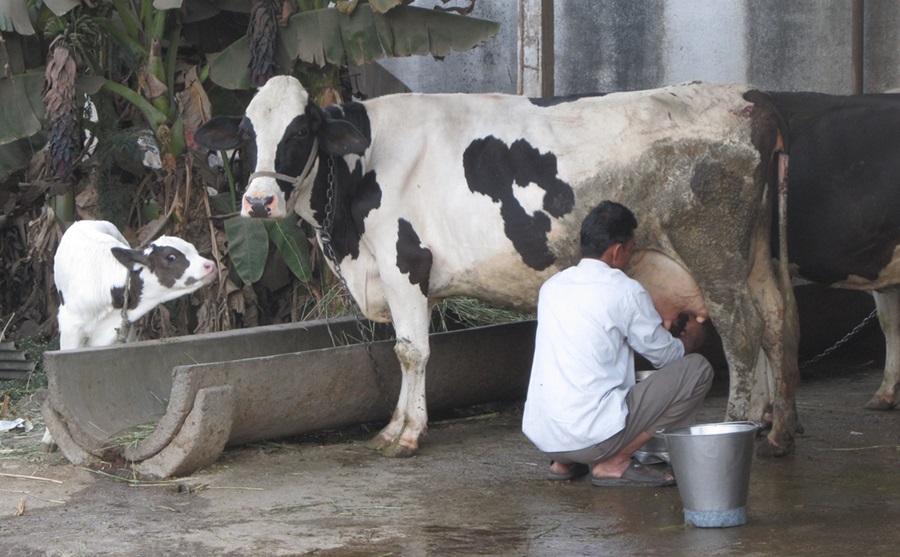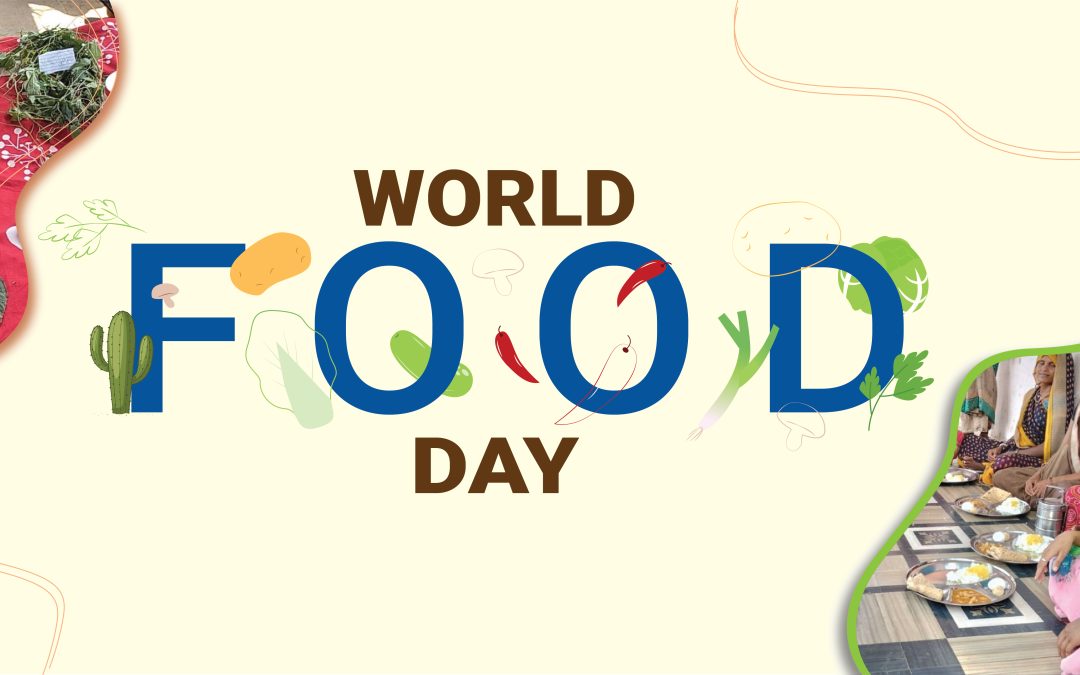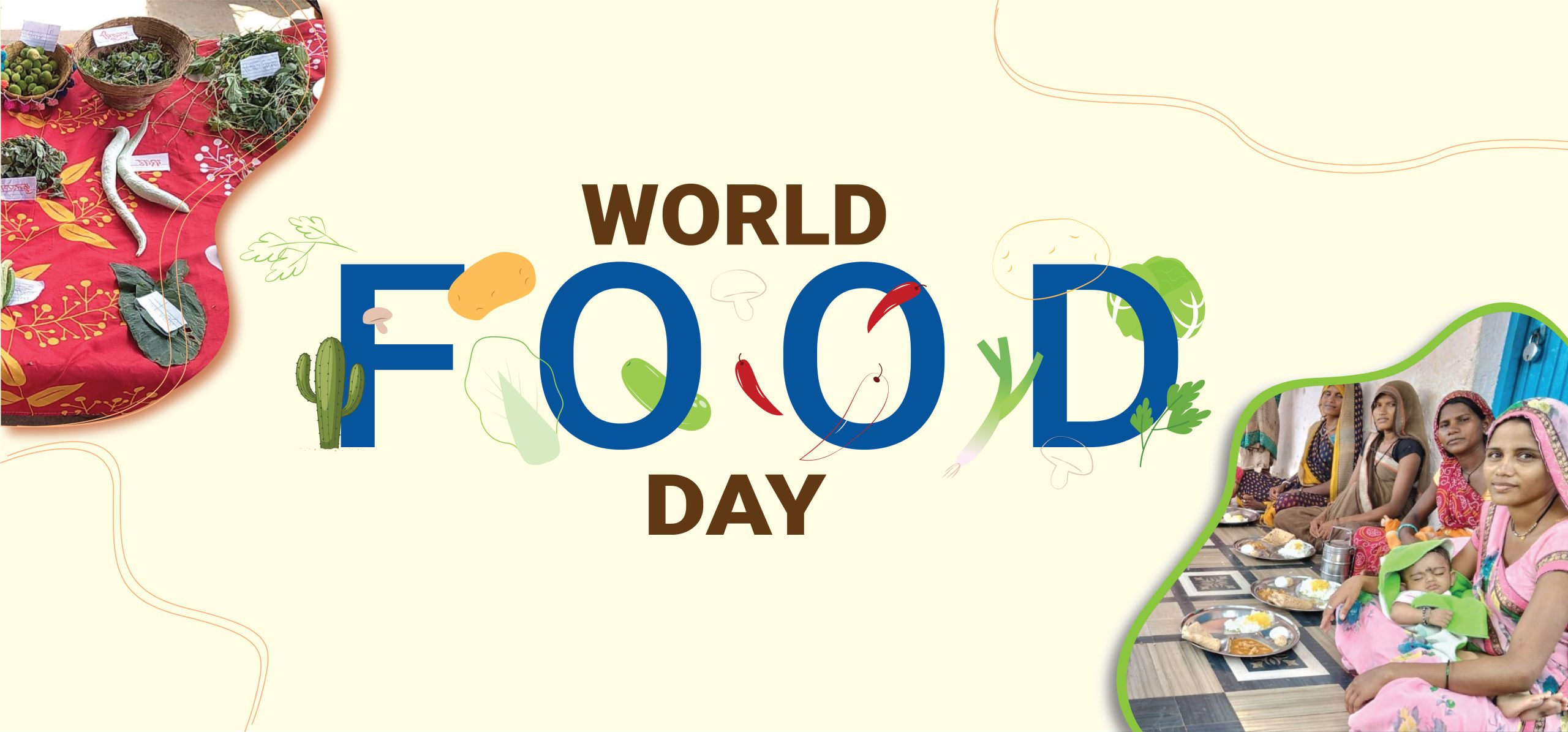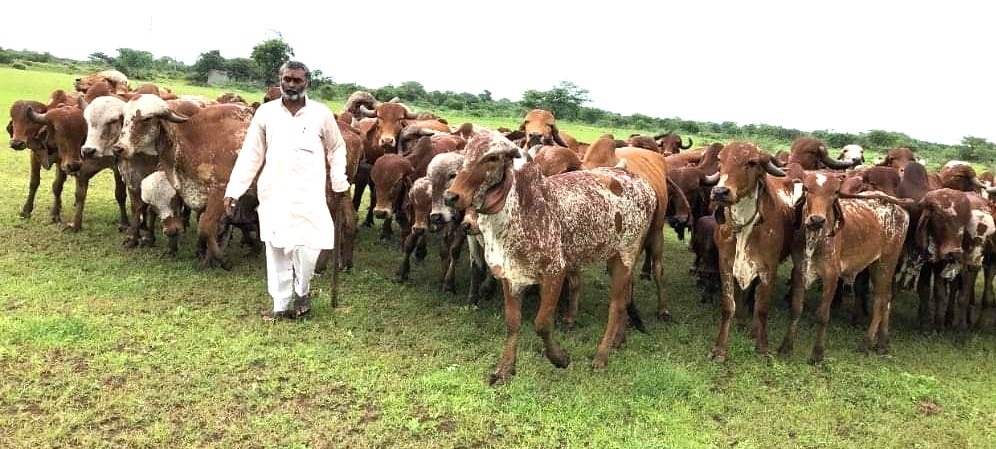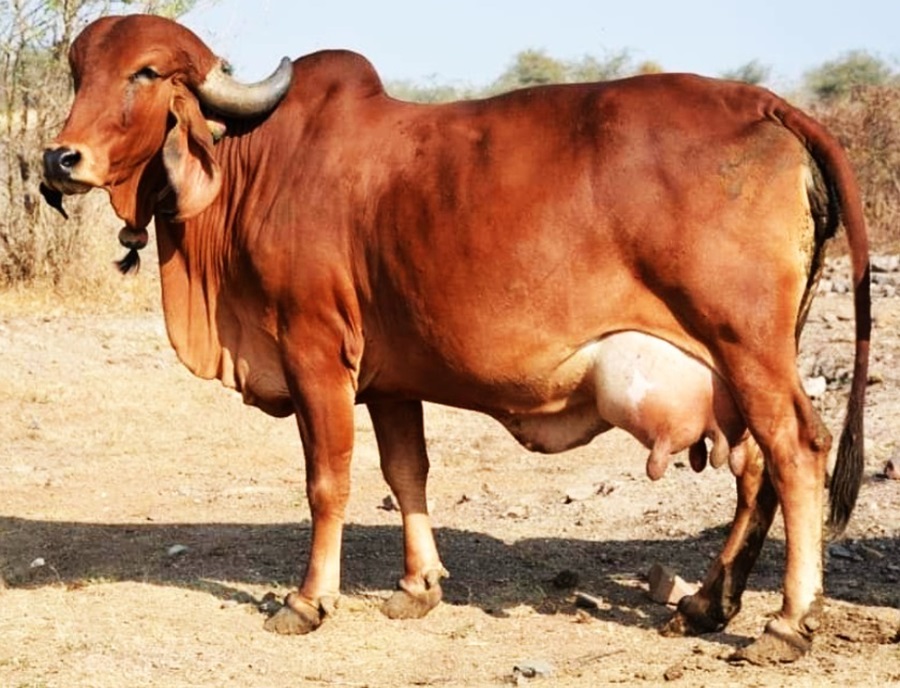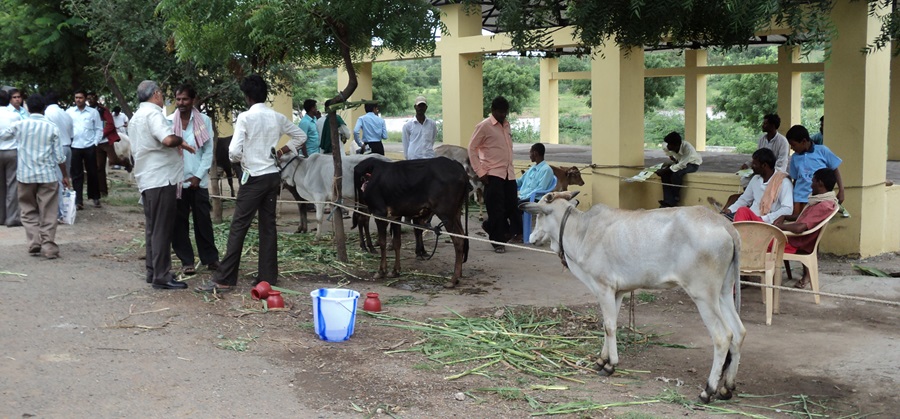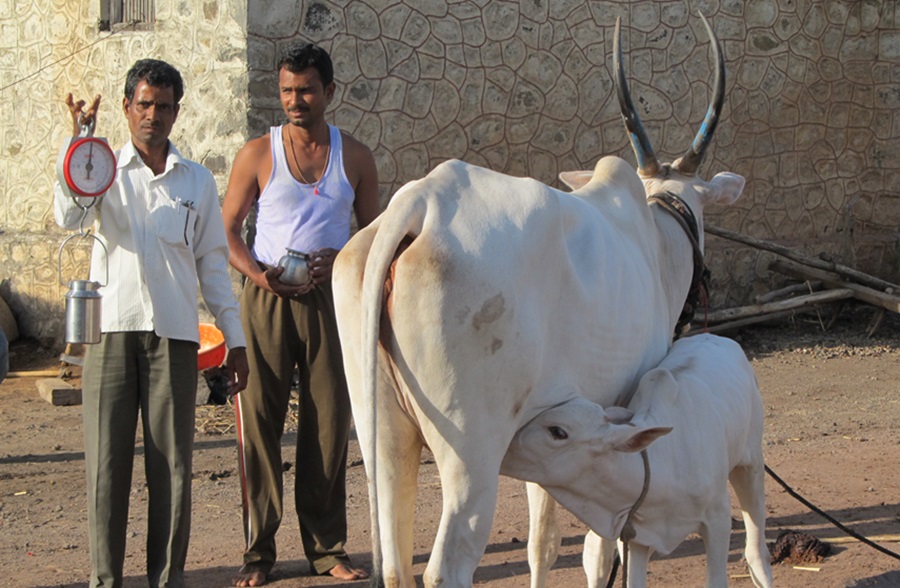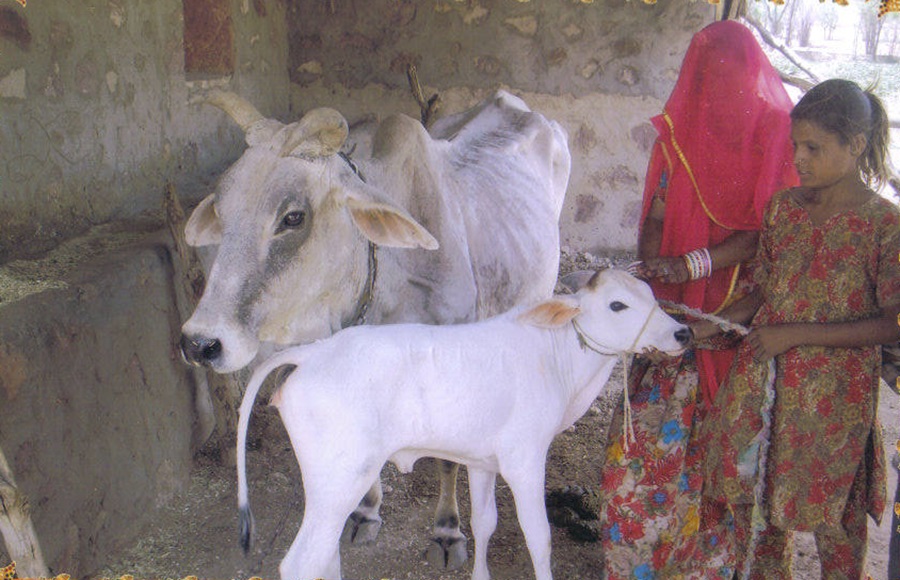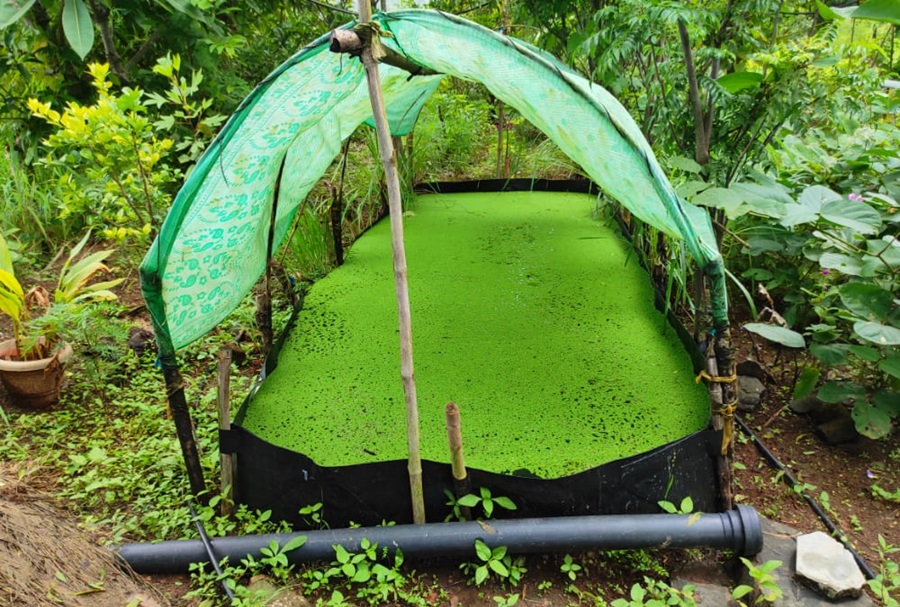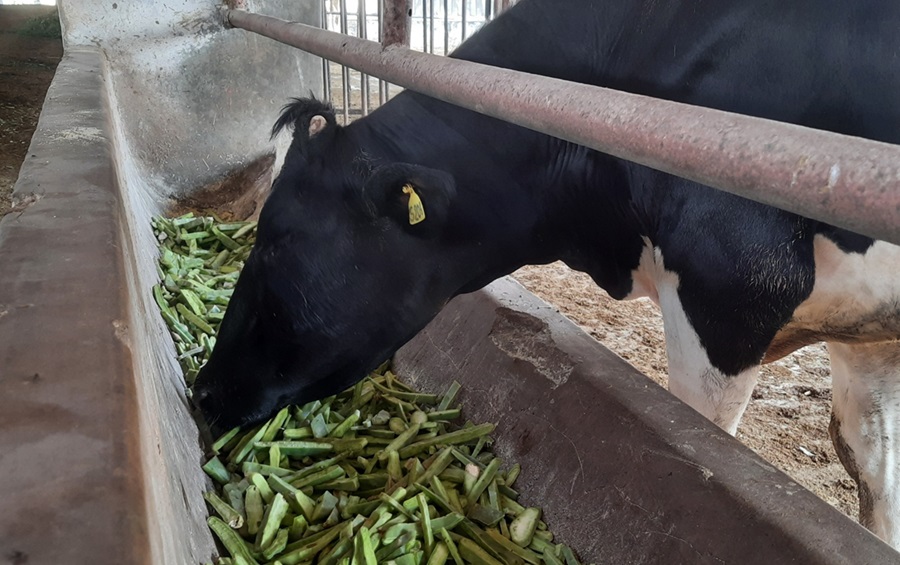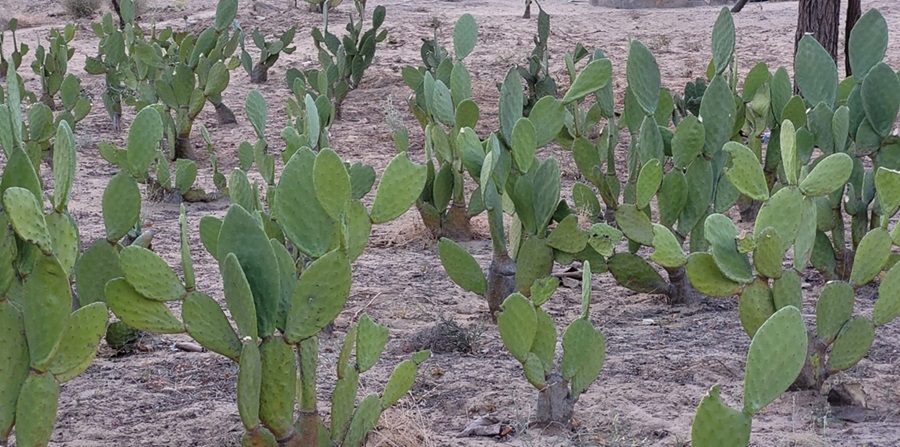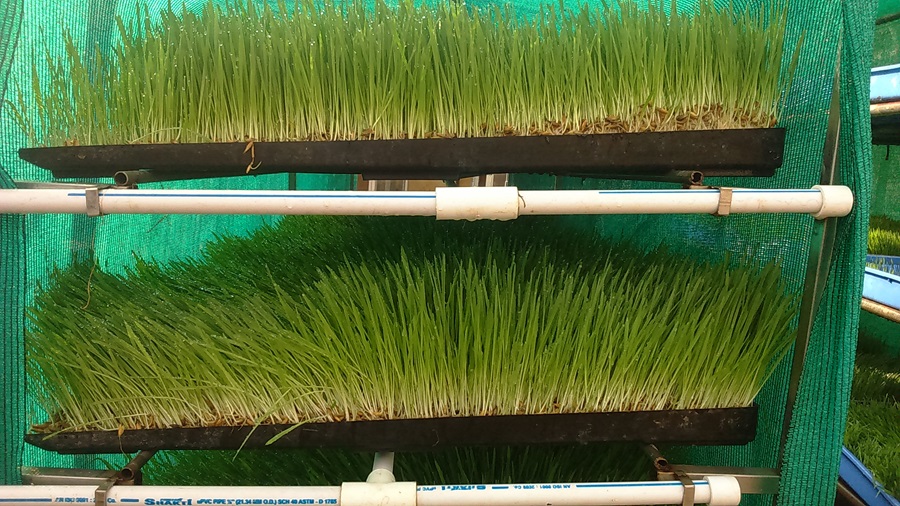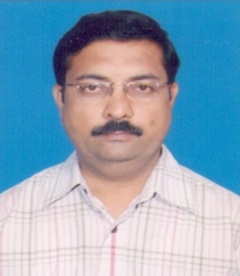
Genomic Selection in Indian Cattle and Buffalo: A Game-Changer for Smallholder Dairy Farmers

Background:
India is the world’s largest milk producer, and much of this success comes from the hard work of millions of smallholder dairy farmers, who on an average, rear just two to five cows or buffaloes. For these families, dairy is not just a source of nutrition but also a steady source of income and financial security. However, improving the productivity of cattle and buffaloes under such smallholder systems has always been a challenge.
Traditionally, farmers and breeding organisations relied on two approaches to improve the performance of animals: pedigree selection and progeny testing. Pedigree selection is based on the performance of parents (mostly cow) or family history, while progeny testing evaluates a bull by measuring the performance of his daughters. While these methods have contributed to genetic improvement, they have a few limitations. Pedigree selection is often unreliable because environmental factors like feed and health strongly affect performance, while progeny testing, though accurate, takes 8–10 years to identify a proven bull. This delay slows down genetic progress and farmers have to wait too long to observe benefits in their herds.
In recent years, a new technology called genomic selection has emerged as a powerful tool to overcome these barriers. This technology uses information from DNA markers spread across the entire genome to predict the future performance of an animal, even at a very young age (1 – 2 months). Instead of waiting years for milk records or progeny results, bulls and cows can now be evaluated within months. This not only speeds up the breeding process but also increases accuracy as the DNA-based prediction captures the true genetic potential of the animal.
For smallholder farmers, this means faster access to superior bulls, healthier and more productive cows and buffaloes, and higher profitability from dairying. Beyond milk yield, genomics also allows selection for other important traits such as fertility, udder health, disease resistance, and heat tolerance — traits that are vital for sustainable dairy farming in India’s diverse and often challenging environments.
Genomic selection, therefore, is more than a scientific advancement; it is a practical solution for the future of Indian dairying, ensuring that smallholder farmers remain at the heart of the country’s dairy growth story.
What is Genomic Selection (GS)?
A modern tool where DNA markers (SNPs) spread across the genome are used to predict an animal’s genetic merit. Instead of waiting years to measure milk yield, fertility, or health traits, GS gives early and reliable predictions.
Why is Genomic Selection Important for India?
Breeding in cattle and buffalo has traditionally relied on pedigree selection and progeny testing, and now adopted genomic selection. As mentioned earlier, pedigree may be fast but it is unreliable due to poor accuracy and progeny testing is accurate but slow. Compared to these two methods, genomic selection is both fast and reliable.
Unlike developed countries where the dairy sector is dominated by commercial farming and large herds, the Indian dairy system is dominated by smallholders and hence, every cow or buffalo matters. Therefore, we cannot simply use the genomic selection equation and/or reference population used in developed countries to arrive at results in our production system. Our country is spread across a large geographic area, divided into multiple agro-climatic zones and various production systems. In the absence of pedigree information, genomic selection can pave the way for effective selection and desired genetic gain. Thus, genomic selection can help policy makers and farmers in the following ways:
Genotype × Environment Interaction
Animals perform differently in different environments. A bull selected in Europe may not give the same results in India. Similarly, the daughters of a bull selected in one region of India with a rich environment and management conditions may not necessarily show similar performance in another region with comparatively difficult conditions and harsh climatic conditions. Hence, special efforts are required to first understand the extent of genotype by environment (GxE) interaction and then design breeding policies tailored to Indian conditions so that farmers can maintain animals which perform well in their specific environments.
In understanding GxE interaction especially in crossbreds, the knowledge of Breed Composition is of utmost importance. From our study of crossbred cattle, we realised that our crossbred cattle are actually a mixed population with mixed inheritance of both Holstein Friesian and Jersey breeds in addition to various native breed proportion. Hence, we used the word “crossbreds” rather than any specific crossbred. GxE interaction study takes this breed proportion into account to determine which breeds or breed combination can work well or is well-suited for which region based on their genotype and actual performance. By considering the area or region or production system, a specific breed combination can be distributed which will be helpful in achieving the desired production.
Public–Private Partnership for Genomic selection
What “we” have accomplished so far
Development of customized SNP panel
One of the major constraints in developing our own reference population was choice of SNP panel. We used the existing SNP panel earlier to genotype Indian population. We understood that those panel (s) were not informative and therefore needed different approaches involving customised SNP panel suitable for our bovine population. This triggered national institutes / organisations such as National Dairy Development Board (NDDB), ICAR-National Bureau of Animal Genetic Resources, National Institute of Animal Biotechnology (NAIB) and BAIF to collaborate and design a SNP panel by choosing informative DNA markers. These fruitful efforts led to the development of India’s own genotyping panels – ‘Gau’ for cattle and ‘Mahish’ for buffalo which were launched by the Hon. Prime Minister of India Mr. Narendra Modi and is being used since then for genotyping purpose.
Building reference population
Since the terminology is technical, let us make it simpler. A reference population is a large group of animals whose DNA has been tested and whose performance (milk records, fertility and health) is well known. A reference population is like a dictionary. The DNA markers (in our case SNPs) are like words. The performance records (milk yield, fertility and health) are the meanings of the words. Once the dictionary is built, you don’t need to wait for years – you can ‘read’ the DNA of any calf and understand its future performance immediately
Building a large breed specific reference population (thousands of genotyped animals with phenotype records of trait of interest) is essential for accurate predictions. This is especially preferable approach in developing countries where pedigree records are scarcely available and the time required to prove the genetic merit of the bull is huge under PT programme. In such cases, the prediction of the genetic merit using reference population, can improve the genetic gain within a short time.
Today, using a large reference population, the genomic selection has been brought into practice in India for 6 breeds viz. HF crossbreds, Jersey crossbreds, Gir, Murrah and Mehsana. All the Central Monitoring Units (CMU) accredited semen stations are selecting young bull calves using genomic breeding values (a measure to determine the genetic merit).
In the current scenario, there are multiple institutes, organisations and government agencies who are engaged in phenotype data collection and genotyping of animals. Through public-private partnerships, a very large breed specific reference population can be built which can bring about improvement in the prediction accuracy by many folds. Sharing data, knowledge, capacity building through trainings, discussion and policies can help our country in the long run and therefore should be the way ahead for sustainable genetic progress in the dairy sector.

What “we” can achieve in future?
Understanding and maintaining genetic diversity
Genetic diversity in animals is like having many tools in a toolbox. If you keep only one tool, you can’t fix every problem. By keeping many tools (genes), your herd can face future challenges like heat, diseases, or new market demands. Genomic selection helps us choose the best animals quickly and accurately. But if we always use only a few top bulls, the population may become too closely related. This reduces genetic diversity. If diversity is lost, animals may become more vulnerable to health problems and fertility issues. With DNA data, we can measure how related animals are and avoid mating close relatives. The present SNP chips also help identify and preserve the unique genetic diversity of Indian cattle and buffaloes, which are naturally adapted to the Indian environment.
Our research has proved that there exists a large within-breed variation. Therefore, it is safe to say that most of our breeds have sufficient genetic diversity. However, it is necessary to monitor genetic diversity on a routine or periodic basis for breed-specific population.
Multi-Trait Genomic Selection and Economic indexing
Presently, we have been selecting the best genetic merit animals based on their production performance and more specifically, their milk yield. This may be an approach to select animals who can be high yielders. But focussing on one trait may hamper the genetic progress of other economically important traits. Traits which are negatively correlated with production such as fat percentage, fertility, body condition score etc. will be affected severely. If we need to achieve sustainable genetic improvement in future, we must adapt multi-trait approach involving economically important traits such as production, fertility, dairy conformation and health. In addition to this, the economic index for bull selection which assigns weight to traits based on their importance to farmers, the bulls are ranked on the basis of total economic merit, ensuring better profitability to farmers.
Use of Genomics with Advanced Reproductive Technologies
Genomic selection becomes even more effective when used together with modern reproductive technologies. These technologies help to multiply the genes of the best animals quickly and spread them widely among farmers. Normally, AI semen produces about 50% male and 50% female calves. With sex-sorted semen, farmers can obtain up to 90% female calves, which are more valuable for milk production. When the semen comes from genomically tested bulls, farmers are not only getting more daughters but also daughters with superior genetic merit. Instead of waiting years to see if a bull is good, genomics tells us early. Using sex-sorted semen ensures more productive female calves from the beginning.
In addition to this, in Embryo Transfer Technology, embryos from high-quality donor cows are transferred into ordinary surrogate cows. If donor cows are genomically tested, we can select only the best females for producing embryos. To make this approach more effective, the use of sex sorted semen along with IVF technology can produce embryos with the desired sex. This way, farmers will not only obtain female calves but they will also get many calves in one year from a top cow, instead of just one.
Conclusion
Genomic selection is not just a laboratory concept — it is a practical tool for Indian dairy farmers. By using genomically tested bulls, understanding breed composition, and adopting balanced breeding strategies, farmers can ensure that their herds are productive, healthy, and profitable.
The future lies in combining science, policy, and farmer participation through strong partnerships. With tools like Gau and Mahish, India is leading the way in making genomics affordable and relevant for smallholder dairy systems.

Farmers’ FAQs
- If I already know which cow gives more milk, why do I need genomics?
Answer: Milk yield depends not only on genetics but also on feed, health, and management. A cow giving more milk may not always transmit this ability to her calf. Genomics tells us the hidden genetic potential, making selection more accurate.
- Will genomic selection make my cows produce more milk immediately?
Answer: No. Genomic selection works on a long-term basis. By using genomically tested bulls in artificial insemination, the herd will gradually become more productive, fertile, and disease-resistant with the female calves produced through genomically selected bulls.
- Does this mean local breeds are better than foreign breeds?
Answer: Both have value. Indigenous breeds are more heat-tolerant and disease-resistant, while exotic breeds have higher yield. Genomics helps us to combine the best of both worlds.
- Why should I know the breed composition of my cow?
Answer: Knowing breed composition helps in selecting the right bull for mating. For example, if your cow already has high HF blood, crossing again with HF may cause fertility and heat stress issues.
- Does this mean private companies will control all genetics?
Answer: No, the idea is to share resources. Public institutes ensure fair access, while private players help scale up technology quickly.
- Will I get more money if I use semen from genomically tested bulls?
Answer: Yes. This is because your herd will gradually have higher yield and better fertility, meaning more milk and fewer losses from disease and infertility.
- For which trait breeding values are available and who provides them regularly?
Answer: At present, NDDB is the nodal agency to provide genomic breeding values and breed composition for crossbreds, Gir, Sahiwal, and Murrah and Mehasana buffalo.
- “Does this mean every cow in the village will be part of the reference population?”
Answer: Not necessarily. Only a randomly selected group of animals across many farms are included to build the database. But once it is ready, every farmer benefits because the semen from genomically tested bulls becomes available for use.
- Is genomic selection only for exotic breeds like HF and Jersey, or also for indigenous cattle and buffalo?
Answer: It is applicable for both. India has developed special chips like Gau (for cattle – Gir, Sahiwal and other dairy breeds for which genomic breeding values can be made available) and Mahish chip (for buffalo – Murrah, Mehasana and other dairy breeds for which genomic breeding values can be made available) to study indigenous breeds. This ensures that native animals are also improved without losing their unique strength such as heat tolerance and disease resistance.
- Will genomics replace the need for good feeding and management?
Answer: No. Genetics decides the potential, but only good feeding, health care and management allow that potential to be fully expressed. Genomics and good management go hand-in-hand.
- Is it too expensive for small farmers?
Answer: If farmer is interested to check the genetic merit and breed purity/ composition of
their own animals, the cost of test is usually around 2,000 to 2,200. In case of bulls, farmers don’t need to pay directly for DNA testing of bulls. The cost is usually borne by breeding programmes, cooperatives or government projects. Farmers benefit indirectly by receiving semen from genomically tested bulls, often at the same price as regular semen.
- How is genomics different from crossbreeding?
Answer: Crossbreeding mixes genes of two breeds, while genomics helps us to choose the best animals within and across breeds. With genomics, we can also maintain the right balance of blood levels (e.g., HF × Indigenous) and avoid problems of over-crossing.
- Can genomics help in reducing diseases in cows and buffaloes?
Answer: Yes. Genomic selection allows us to identify bulls with better resistance to mastitis, reproductive problems, and tropical diseases. Using such bulls reduces health costs and improves herd longevity. However, under the present Indian condition, it is yet to be standardised. But we hope that it may happen in the near future.
- What if I keep only 2–3 animals? Will genomics still benefit me?
Answer: Yes. Since genomic bulls are used through AI services, even farmers with very small herd, also benefit. Every calf born from such semen carries improved genetics, which adds value to the small herd over time.
- How soon will I see results if my cooperative starts using genomically tested bulls?
Answer: Within one generation (3–4 years) you will notice better performing cows. Over two generations (6–8 years), the difference in milk, and fertility will be significant compared to herds not using genomics.







